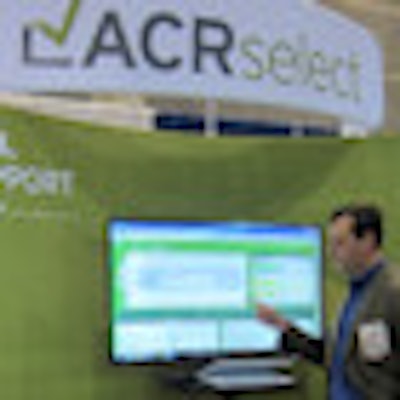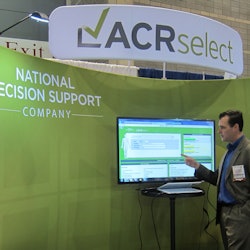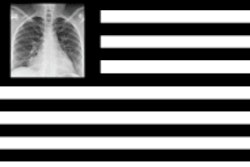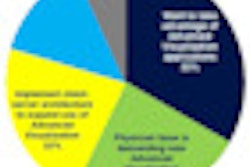
If you were at RSNA 2012, you may have missed the small green booth along the edge of the South Building exhibit floor in McCormick Place. But ACR Select's debut RSNA appearance was an important harbinger of the progress the project is making in trying to solve the problem of inappropriate medical imaging utilization.
ACR Select was founded earlier in 2012 as a joint project between the American College of Radiology (ACR) and healthcare informatics software developer National Decision Support Company (NDSC). The collaboration is an outgrowth of the ACR's announcement in July 2012 that it was bringing its Appropriateness Criteria to the digital world through a deal in which NDSC would import the guidelines into clinical decision-support (CDS) algorithms that can be used as part of healthcare IT applications.
 ACR Select made its debut at the RSNA 2012 meeting.
ACR Select made its debut at the RSNA 2012 meeting.
The idea is that physicians ordering imaging exams through their computerized physician order-entry (CPOE) software would encounter ACR Select whenever they are choosing an imaging exam for a patient. ACR Select applies a numerical score and color code to the exam based the Appropriateness Criteria, with questionable exams coded in red, appropriate exams in green, and yellow for those in between.
The idea is that the real-time scoring would dissuade physicians from ordering the inappropriate exam, while guiding them to appropriate imaging studies or even no study if it's not warranted, according to Scott Cowsill, senior vice president of strategic initiatives at NDSC. Physicians can gain access to the clinical evidence backing the scoring with a few mouse clicks, making ACR Select a highly transparent tool.
"What we are trying to do is make radiology ordering more appropriate for the patient the first time," Cowsill said.
The key is making the Appropriateness Criteria available at the point of ordering in digital form. The guidelines have been in existence for decades, but up until ACR Select they were in paper format and were consulted like a reference book. That doesn't cut it in today's digitally driven departments.
The ACR and NDSC also see ACR Select as an improvement over radiology benefits managers (RBMs), which have never been popular among either radiologists or referring physicians. Putting appropriateness scoring at the point of the order is more efficient than requiring physicians to make a phone call, and the transparent and interactive nature of the scoring can help physicians understand why exams are being classified the way they are.
ACR Select is currently being used at two of the five pilot sites participating in a clinical decision-support demonstration project being underwritten by a $10 million grant from the U.S. Centers for Medicare and Medicaid Services (CMS). The agency has a keen interest in reducing inappropriate utilization in the Medicare and Medicaid programs; it's hoped that the project will show that CDS is either equivalent to or more effective than using RBMs to control utilization.
It may take a while before that point is proved, however; the sites participating are about six to eight months into what is supposed to be a two-year project. After that, the data will need to undergo analysis and then submission to a peer-reviewed journal.
Until then, NDSC will continue its work making ACR Select available to healthcare IT software developers for integration into CPOE and other HIT applications. NDSC was pleased with the reception that ACR Select got at its inaugural RSNA meeting, and all parties have high hopes for the project, Cowsill said.
"Ordering clinicians are all looking for what they consider to be a national standard for imaging guidelines, so what we are hoping is that ACR Select slowly becomes that ... national standard," he said. "It's the best, most robust set of data that we know of, and the best way to get it in use is to get it out there and get it into the hands of the using clinicians at the time of order so it can be actionable right then and there."
For the complete AuntMinnieTV interview with Scott Cowsill of National Decision Support Company, please click on the video below.



















